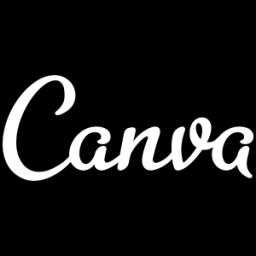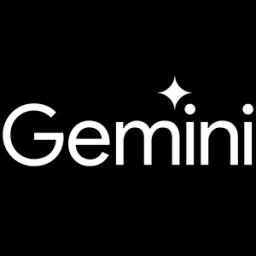Understanding Wealth Inequality
Wealth Inequality in America
Estimated read time: 1:20
Learn to use AI like a Pro
Get the latest AI workflows to boost your productivity and business performance, delivered weekly by expert consultants. Enjoy step-by-step guides, weekly Q&A sessions, and full access to our AI workflow archive.














Summary
This video explores the striking difference between perceived and actual wealth distribution in the United States. Harvard Business professor and economist surveyed over 5,000 Americans on their views of wealth distribution and compared these perceptions to reality. The video simplifies the concept by reducing 311 million Americans to a symbolic 100 people, demonstrating stark wealth inequality. It reveals the top 1% holding 40% of the nation's wealth, while the bottom 80% holds just 7%. This disparity has grown over the last few decades despite hard work by individuals across various demographics. The video calls for a wake-up to the disparity in wealth distribution without resorting to extreme measures such as socialism, highlighting a need to reassess what is considered fair and equitable.
Highlights
- A study revealing Americans' perceptions of wealth vs. reality. 🤔
- Visualizing wealth with 100 representative Americans. 👀
- The top 1% owns a huge chunk of the wealth, while the bottom 80% scrambles for crumbs. 🍞
- A staggering visual of inequality: 1% holding more wealth than imagined. 📈
- Highlighting the need for fairer wealth distribution without going to extremes. ⚖️
Key Takeaways
- Wealth perception vs. reality: Americans' perception of wealth distribution is far from the actual skewed disparity. 😮
- The stark inequality: The top 1% holds 40% of the nation’s wealth! 🚨
- Symbolic demonstration: Representing 311 million Americans as 100 people to show the wealth gap. 👥
- Visual representation: Utilizing a symbolic pile of cash to showcase the distribution helps clarify inequality. 💰
- Call to action: Urges for a reevaluation of what is considered fair in wealth distribution. 🔍
Overview
The video explores a fascinating study conducted by a Harvard Business professor that highlights a massive disconnect between perception and reality of wealth distribution in America. More than 5,000 Americans were asked to estimate and idealize wealth distribution, revealing that most people desire a more equitable society. This is contrasted with the shocking reality where the top 1% possesses almost half of the nation's wealth.
Illustrated through a simplified model of 311 million people condensed into 100, the video vividly presents this inequality. It contrasts the ideal distribution against what people think exists and, finally, the real numbers, which are far more lopsided than expected. The top 1%'s towering stack of cash signifies wealth concentration, starkly juxtaposed against the plight of the lower and middle classes.
Ultimately, the creators call for awareness and action, advocating for a reassessment of what is deemed fair. By acknowledging the growing gap without resorting to radical changes like socialism, they suggest striving towards a system that better aligns with the collective ideal—one that balances incentive and equity, invigorating the American Dream for all.
Chapters
- 00:00 - 00:30: Intro: Perception vs Reality The chapter titled 'Intro: Perception vs Reality' delves into the discrepancies between people's perceptions and the actual reality of wealth distribution in the United States. It references a survey conducted by a Harvard Business professor and economist, where over 5,000 Americans were asked about their thoughts on how wealth is divided in the country. Participants provided their perceptions, which were divided into five roughly equal groups, and later their views on what the ideal wealth distribution should resemble, revealing significant gaps between perception and preferred reality.
- 00:30 - 01:00: Ideal Distribution vs Perceived Reality The chapter explores the disparity between the ideal distribution of wealth and the perceived reality in America. It highlights that nine out of ten people believe wealth distribution should be more equitable than it currently is. The discussion emphasizes the gap between the ideal situation and public perception, as well as the difference between perceived and actual wealth distribution in the country.
- 01:00 - 01:30: Actual Wealth Distribution The chapter 'Actual Wealth Distribution' reveals the stark reality of wealth distribution in the United States. Contrary to popular belief, the bottom 40% of Americans hold an insignificant portion of the nation's wealth, barely registering on a wealth chart. Meanwhile, the top 1% possess more wealth than nine out of ten Americans expect the entire top 20% to have.
- 01:30 - 02:00: Visualizing Wealth Inequality The chapter focuses on the concept of wealth inequality in America. It begins by simplifying the population of 311 million Americans into a representative group of 100 people with varying professions, such as teachers, firefighters, engineers, and a few wealthy individuals like investment bankers and CEOs. The individuals are then lined up based on their wealth, from the poorest on the left to the wealthiest on the right, to illustrate the disparity in wealth distribution. The chapter likely uses this visual metaphor to help readers understand the abstract and often complex topic of wealth inequality more concretely.
- 02:00 - 02:30: Symbolic Wealth Redistribution The chapter discusses the concept of wealth distribution in the United States using a symbolic representation. It starts by visualizing the total wealth of $54 trillion in 2009 and distributing it among 100 representative Americans. The notion of socialism is briefly explored, where wealth is distributed equally, but it is dismissed as impractical because it doesn't incentivize hard work and productivity. The chapter, therefore, suggests that while equal distribution is an ideal, it's not feasible for motivating individuals in a society.
- 03:00 - 03:30: Perceived Wealth Distribution The chapter discusses the concept of the American Dream in the context of perceived wealth distribution. It references a curve demonstrating economic incentives, suggesting that the wealthiest individuals are significantly better off (10 to 20 times) than the poorest. Yet, it highlights that even those considered poor aren't impoverished by historical standards, as they are above the poverty line, contributing to a robust middle class.
- 04:00 - 04:30: Reality Check: Vast Inequality The chapter titled 'Reality Check: Vast Inequality' addresses the perception versus the reality of wealth distribution in America. It begins with a discussion on a preferred wealth distribution curve that both Republicans and Democrats idealize, with a majority believing this to be an ideal and fair distribution. The chapter proceeds to reveal what people actually think the wealth distribution in America looks like, which is less equitable than the ideal distribution. Despite this perceived unequal distribution, it still appears relatively fair to some, though there is an acknowledgment that the poorest 20 to 30 percent of the population is beginning to suffer. The chapter aims to juxtapose these perceptions with the reality of the situation.
- 05:00 - 05:30: Historical Comparison and Investments The chapter 'Historical Comparison and Investments' discusses the growing economic disparity in America. It highlights that the middle class is struggling more compared to the past, while the wealthy are significantly richer, earning about 100 times more than the poorest citizens and 10 times more than the middle class. The chapter also reveals that the actual wealth distribution is even more alarming, with the poorest Americans having negligible wealth and the middle class nearly indistinguishable from them.
- 05:30 - 06:30: Call for Awareness The chapter 'Call for Awareness' delves into the stark economic disparities between different income groups. It highlights that, except for the top ten percent, most people, including those in the top ten to twenty percentile, are facing financial challenges. The narrative emphasizes the vast wealth of the top one percent, whose income is depicted as immensely larger than others, with their monetary stack visually exceeding the scale used to represent other groups. This disparity sets the context for a broader discussion on economic inequality and awareness.
Wealth Inequality in America Transcription
- 00:00 - 00:30 there's a chart I saw recently that I can't get out of my head a Harvard Business professor and economist asked more than 5,000 Americans how they thought wealth was distributed in the United States this is what they said they thought it was dividing the country into five RUF groups of the top bottom and middle three 20% groups they asked people how they thought the wealth in this country was divided then he asked them what they thought was the ideal distribution and 92% that's at least
- 00:30 - 01:00 nine out of ten of them said it should be more like this in other words more equitable than they think it is now that fact is telling admittedly the notion that most Americans know that the system is already skewed unfairly but what's most interesting to me is the reality compared to our perception the ideal is as far removed from our perception of reality as the actual distribution is from what we think exists in this country so ignore the ideal for a moment
- 01:00 - 01:30 here's what we think it is again and here is the actual distribution shockingly skewed not only to the bottom 20 percent and the next 20 percent the bottom forty percent of Americans barely have any of the wealth I mean it's hard to even see them on the chart but the top 1% has more of the country's wealth than nine out of ten Americans believe the entire top 20 percent should have mind-blowing but let's look at it
- 01:30 - 02:00 another way because I find this chart kind of difficult to wrap my head around instead let's reduce the 311 million Americans to just a representative one hundred people make it simple here they are teachers coaches firefighters construction workers engineers doctors lawyers some investment bankers a CEO maybe a celebrity or two now let's line them up according to their wealth poorest people on the Left wealthiest on the right just a steady row of folks
- 02:00 - 02:30 based on their net worth will colour-code them like we did before based on which percent quintile they fall into now let's reduce the total wealth of the United States which was roughly fifty four trillion dollars in 2009 to this symbolic pile of cash and let's distribute it among our 100 Americans well here's socialism all the wealth of the country distributed equally we all know that won't work we need to encourage people to work and work hard
- 02:30 - 03:00 to achieve that good ol American Dream and keep our country moving forward so here's that ideal we asked everyone about something like this curve this isn't too bad we've got some incentive as the wealthiest folks are now about 10 to 20 times better off than the poorest Americans but hey even the poor folks aren't actually poor since the poverty line has stayed almost entirely off the chart we have a super healthy middle
- 03:00 - 03:30 class with a smooth transition into wealth and yes Republicans and Democrats alike chose this curve nine out of ten people 92 percent said this was a nice ideal distribution of America's wealth but let's move on this is what people think America's wealth distribution actually looks like not as equitable clearly but for me even this still looks pretty great yes the poorest 20 to 30 percent are starting to suffer quite a
- 03:30 - 04:00 lot compared to the ideal and the middle class is certainly struggling more than they were while the rich and wealthy are making roughly a hundred times that of the poorest Americans and in about ten times that of the still healthy middle class sadly this isn't even close to the reality here is the actual distribution of wealth in America the poorest Americans don't even register they're down to pocket change and the middle class is barely distinguishable from the
- 04:00 - 04:30 poor in fact even the rich between the top ten and twenty percentile are worse off only the top ten percent are better off and how much better off so much better off that the top two to five percent are actually off the chart at this scale and the top 1% this guy well his stack of money stretches 10 times higher than we can show here's his stack of cash rhe stacked all by itself
- 04:30 - 05:00 this is the top 1% we've been hearing so much about so much green in his pockets that I have to give him a whole new column of his own because he won't fit on my chart 1% of America has 40% of all the nation's wealth the bottom 80% 8 out of every 10 people or 80 out of these hundred only has 7 percent between them and this has only gotten worse in the last 20 to 30 years while the richest 1%
- 05:00 - 05:30 take home almost a quarter of the national income today in 1976 they took home only nine percent meaning their share of income has nearly tripled in the last thirty years the top 1% owned half the country stocks bonds and mutual funds the bottom 50% of Americans own only half a percent of these investments which means they aren't investing they're just scraping by I'm sure many of these wealthy people have worked very
- 05:30 - 06:00 hard for their money but do you really believe that the CEO is working three hundred and eighty times harder than his average employee not his lowest paid employee not the janitor but the average earner in his company the average worker needs to work more than a month to earn what the CEO makes in one hour we certainly don't have to go all the way to socialism to find something that is fair for hardworking Americans we don't even have to achieve what most of us
- 06:00 - 06:30 consider might be ideal all we need to do is wake up and realize that the reality in this country is not at all what we think it is you